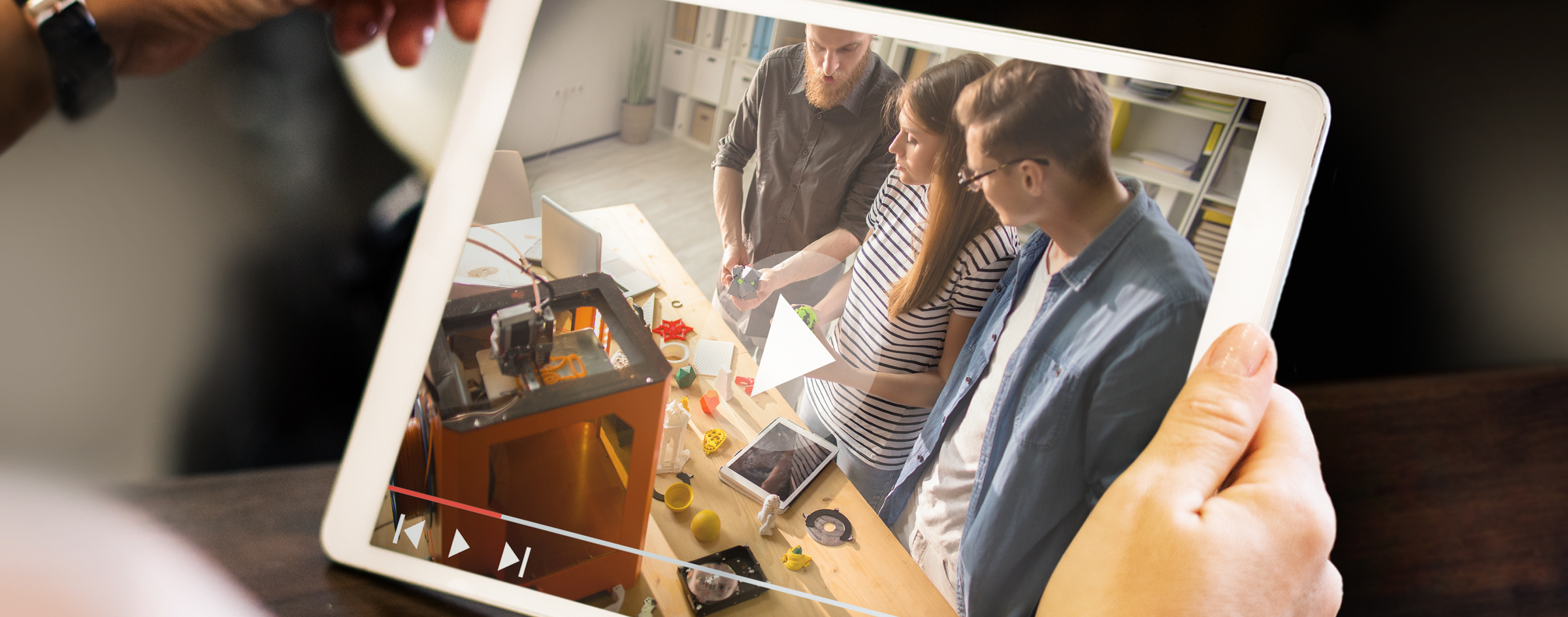Blame Amazon and its one-click Buy Now button. Blame the Facebook API for making it WAY too easy to create a user account for the app you just downloaded. Blame Apple, Uber, Netflix, DoorDash and every other ubiquitous tech company that puts the world at our fingertips—and just a touch (or voice command) away. The fact is, consumers are more spoiled enabled than ever before. And far less tolerant of even the most minor inconveniences.
B2B companies and those who sell high-consideration products (cars, RVs, expensive electronics with longer buyers’ journeys) are not off the hook; consumer experiences inevitably skew people’s expectations of business vendors, suppliers and partners. And digital friction—from slightly annoying to rage-inducing—is a silent killer.
What is digital friction?
Business.com defines friction as “anything that slows the customer journey at any phase … anything that causes your customer to hesitate … anything that takes your customer’s time.” Web page took too long to load? Forget it. Name, email, job title and company name?! Don’t think so. I have to call and talk to a person to place my order?? NOPE.
Large consumer companies—particularly those aforementioned tech giants—spend millions (sometimes billions) a year solely to eliminate every possible point of user friction. In its early days, Spotify was completely obsessed with shaving mere milliseconds from its most important user interaction (clicking play); in fact, the company credits that obsession with its multibillion-dollar success.
Back to reality: We can’t all be Spotify, Uber or Amazon. The good news: We don’t have to be. Key improvements in your customers’ and prospects’ digital experiences can go a long way.
Key examples of digital friction (and how to solve for them)
Friction can kill a deal. In the case of a digital product or service, it can destroy user satisfaction and engagement. But what if friction kills a lead before the sales team ever gets a shot? This is the primary concern of digital marketers everywhere. After all, the same metrics by which we’re measured are the ones that plummet when friction comes into play. Read on for the prospect/customer reactions to avoid.
What are you emailing me about again?
According to a survey by Adestra, most people (70%) will delete an email within 3 seconds if the content displays incorrectly on mobile. That’s if they bite on your subject line to begin with. And because we’ve reached the mobile tipping point—with 68% percent of email opens happening on mobile devices—you have less time than ever to capture their attention. Keep subject lines short and compelling and make sure your email design takes a mobile-first approach (scannable copy, single column, etc.).
I want your content—but not that badly.
High-value, gated content is a fantastic way to capture the attention of top-funnel prospects: survey/research findings; a trend report; or guide to your product category to help a prospect understand the ins and outs and make buying decisions. All you’ll ask for in return for this valuable content is the prospect’s name and email, right? Marketers who push for more (phone number, company name, ZIP, first-grade teacher’s name) are pushing their luck.
According to Hubspot, 2-3 form fields is the sweet spot (we recommend first name, last name and email), with conversion rates dropping steeply with each additional field.
You can go a step further to remove friction with Facebook and LinkedIn leads ads. These ad products allow the user to get a piece of content or submit a form automatically, without ever having to leave the social platform. The user simply clicks the ad, and the information from their Facebook or LinkedIn profile auto-populates. With one more click of the “submit” button they’ve got their content. And you’ve got your lead. We’ve tested these ads against ads that send users to a landing page form. Not surprisingly, the leads ads garner substantially higher conversion rates.
You made me an offer; don’t make me jump through hoops to get it.
Nothing kills a conversion faster than an awesome promotion with a less-than-awesome redemption process. Just as with gated content, the goal here is to make it as easy as possible for a prospect to take you up on your offer.
Such was the challenge for a client of ours that was promoting a VIP program for an upcoming event. The promotion involved a free hotel room, food and other amenities for VIP guests attending the show—an offer that could easily fall flat if it was too difficult to redeem. But thanks to a frictionless redemption process—complete with leads ads, a conversion-oriented landing page and an easily accessible trip concierge—we attracted and secured VIP guests quickly, surpassing VIP attendance goals.
What’s wrong with your website?
Chances for friction on your website are innumerable and complex. Here are a few priority areas that you’ll want to assess first:
- Site speed. There’s a reason site speed is a key element in SEO: slow sites are extremely frustrating to users, and may cause them to stop browsing altogether. Ask your webmaster to run assessments on your site speed—for both desktop and mobile.
- Mobile performance. Speaking of mobile—good performance here is vital. So much so that Google is now assessing/ranking websites based on their mobile performance FIRST. Does your site stack up?
- Confusing hierarchy/navigation and buried information. What information is most important to your customers? How do they navigate your site? Are they having trouble finding information? Surveys, anecdotal evidence and UX tools (like heat-mapping) can help you determine if your site structure and content organization are causing friction.
You want engagement? Come to me.
If you build it, they might come. After all, the bar for digital content is higher than ever. To get likes, shares and any other form of engagement, you better bring the value—and make it easy. This usually means going to where your audience is—rather than waiting for them to come to you. A few examples:
- One of our clients has great success with easy-to-enter social media contests: Share a photo with a hashtag for a chance to win. The barrier to entry is low and the potential rewards are enticing.
- We’re constantly exploring new and engaging ad formats—like Facebook Canvas and Google Discovery ads. Many of these formats allow users to interact with and learn more about your brand, without leaving the site/network in which they’re browsing. You guessed it—frictionless.
- Chatbots and messaging apps are here to stay! And you don’t need sophisticated customer service AI to take advantage. Chatbot logic can be a simple as asking the user a few questions to help guide them toward the best product/solution for their needs—removing the work from their research process.
- Live broadcasting and “story” formats are a boon to organic social efforts. Thanks to favorable algorithms, they still garner relatively high reach (as opposed to organic static posts). We’ve seen amazing response to our clients’ activities in this vein—presumably because these formats make user engagement easy and
What tactics have helped you remove friction and boost conversion? Have you seen other areas where friction causes problems?


